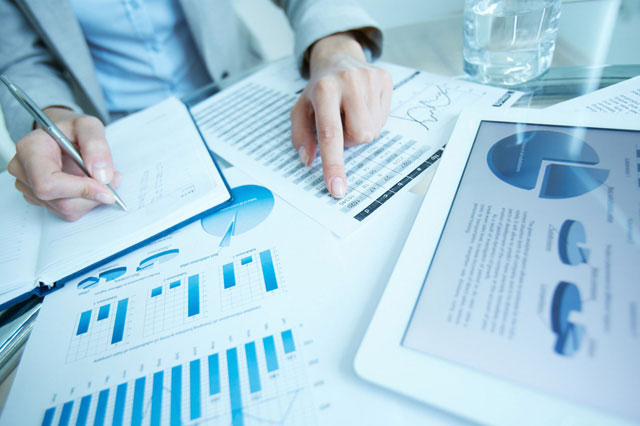If you take out a loan from the bank, you are required to record the value of your most significant assets and the totality of your liabilities. The bank utilizes this information to determine the financial strength of your situation. It looks at the worth of the assets, including your home and car, and then puts an appropriate value on them. The bank also ensures that all properly disclosed liabilities, including credit card and mortgage loans, are reported and properly evaluated. The value that all of your assets, less the amount of liabilities, provide your equity or net worth. The financial situation of a publicly-traded company is comparable, but investors have to take a second step to evaluate the financial situation relative to its market value. Let's look at it.
The Balance Sheet
Similar to your financial situation, the company's assets and liabilities determine a business's financial position. The financial position of a company also includes the equity of shareholders. All this information is made available to shareholders as a balance sheet. Let's say we're looking at the accounts of a fictional retailer that is publicly listed, the Outlet, to evaluate its financial standing. For this, we look over the company's annual report, which is usually available on a company's site. The most common format for this is the balance sheet. It starts with assets, followed by liabilities, and finally, shareholder equity.
Current Assets and Liabilities
The balance sheet separates the liabilities and assets into non-current and current assets. Current assets, also known as current liabilities, have an expected duration of fewer than twelve months. For example, let's say that the inventory levels of the Outlet were reported as of December. 31st of 2018 is scheduled to be sold by the next year. At that point, the amount of inventory will drop, and the cash amount will increase.
Like other retailers, The Outlet's inventory constitutes most of its assets currently in use, which is why it should be thoroughly assessed. Since inventory represents an investment of precious capital, Companies will strive to limit the value of their inventory at a particular quantity of sales or to maximize the sales volume at a certain amount of inventory. Suppose The Outlet sees a 20 percent decrease in inventory value and an increase of 23% in sales over the previous year. In that case, that is an indication that they're managing their inventory effectively. This decrease positively impacts the company's cash flow from operations.
Current liabilities are the obligations a company must meet within the next year. They include current (or already accrued) obligations to employees, suppliers, the tax office, and other providers of short-term financing. Companies attempt to manage cash flow to ensure they have enough funds to cover the short-term obligations when they become due.

The Current Ratio
The current ratio - which is actual current assets divided in half by total current liabilities, is typically utilized by analysts to evaluate the company's ability to satisfy its obligations in the short term. A good current ratio is different in different industries; however, it must not be too low that it suggests imminent bankruptcy or too high that it suggests an unneeded increase in receivables, cash, or inventory. Like any comparison, the company's current ratio analysis must be conducted on the previous.
Non-Current Assets and Liabilities
Non-current assets and liabilities are those whose lives are expected to last beyond this year. For a company such as The Outlet, its biggest non-current asset is likely to include the property, plant, and equipment required to operate its business. The long-term liabilities may be related to obligations under a plant, property leases, equipment, and other loans.
Financial Position: Book Value
If we subtract the total liability from assets, we're left with equity in the shareholders. In essence, it is an accounting value, book value, or the accounting value of the shareholder's stake in the business. It is comprised mainly of the capital accumulated by shareholders over time, as well as profits that are retained by the business. It includes the profits that are not distributed to shareholders as dividends.
Market-to-Book Multiple
When comparing a company's market value against its book value, investors can, at a minimum, determine if a company is priced too low or too high. Despite its flaws, market-to-book is still a vital instrument for investors with value. Numerous studies have shown that companies with low markets-to-book stocks are more successful than those with higher multiples. This is logical since an extremely low market-to-book multiple indicates that the company is in an excellent financial position relative to the price.




